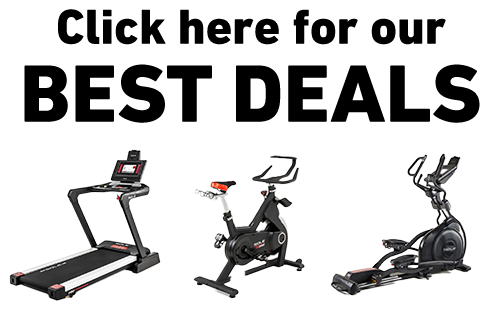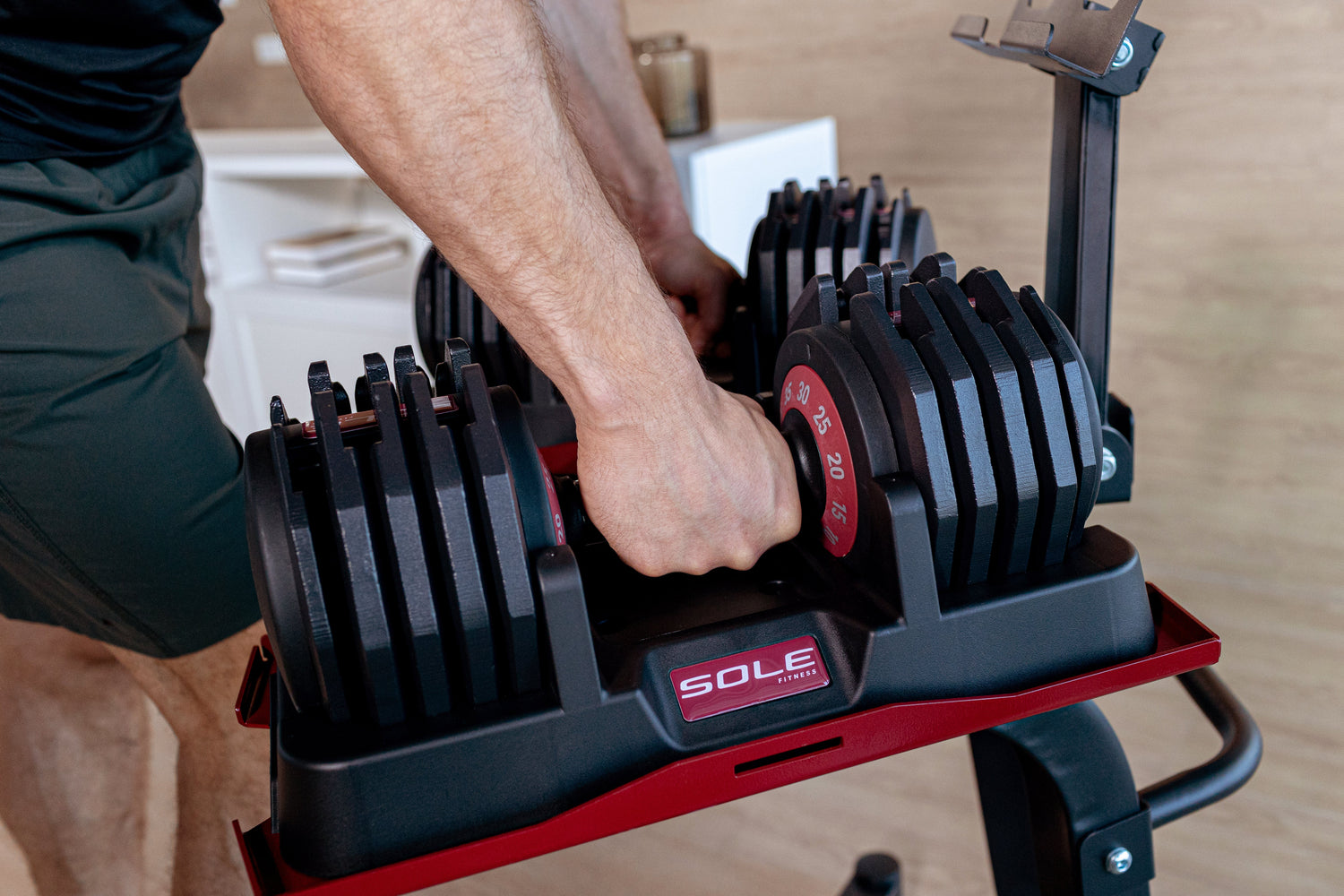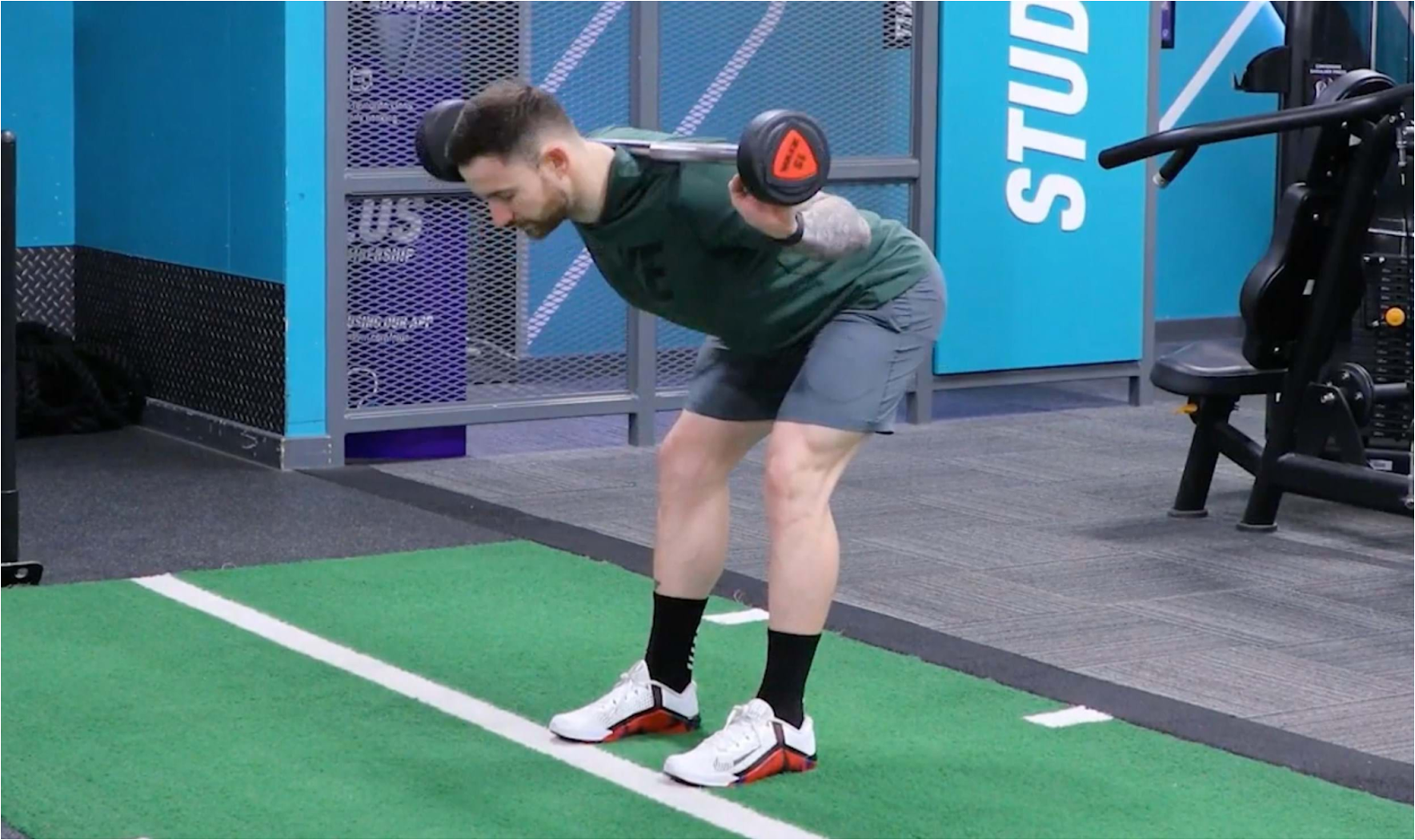Key Takeaways
- Dumbbell rows let you work one side at a time and fix muscle imbalances.
- Barbell rows let you go heavier, perfect for beast mode strength gains.
- Both hit your back muscles but in slightly different ways.
- Choose based on your goals: strength, muscle growth, or correcting imbalances.
- SOLE equipment takes both exercises to insane levels, no matter if you go with the space-saving SW180 Adjustable Dumbbells, the complete SW101 collection, or the beast-mode SW111 Olympic Barbell.
Dumbbell Row vs Barbell Row Overview
Exercise Basics
Dumbbell rows are super versatile because you work one side of your body at a time. Notice your right side is weaker than your left? Dumbbell rows help fix that.
Barbell rows make you use both sides of your body together. The cool part? You can usually lift way more weight this way, which is awesome for getting stronger overall.
Purpose of Rows
The primary goal of both the dumbbell and barbell row is to strengthen and build the muscles of the upper and middle back and help improve your posture. Here's a quick breakdown:
- Dumbbell Row: Great for balance and making sure both sides of your back are equally buff.
- Barbell Row: Perfect for raw strength and power.
Common Misconceptions
Many people believe that one type of row is superior to the other. However, both exercises are awesome, just for different things. It's not about which is better overall, but which is better suited to your specific needs. Some think barbell rows are only for bodybuilders or advanced lifters, but they can be beneficial at any level if done correctly.
|
At SOLE, we're proud to offer top-quality exercise equipment designed for home and gym use. Our machines are built to meet the highest standards of durability and performance, making them ideal for fitness enthusiasts at any level. SOLE Products
|
Muscles Worked
Both dumbbell and barbell rows are powerhouse exercises for your back. They primarily target the latissimus dorsi, which is the large muscle on the sides of your back. (Image courtesy of Kraftschule TV)
Primary Muscle Groups
The star of the show is your latissimus dorsi (lats). These are the muscles that give you that V-shaped torso if you build them up. They help pull your arms down and back, which is important for basically any pulling movement.
Secondary Muscles Engaged
Besides the lats, rows also engage several secondary muscles. These include:
- Rhomboids: Located between your shoulder blades, these muscles help retract the scapula.
- Trapezius: This muscle spans the neck, shoulders, and back, assisting in moving and stabilizing the shoulder blades.
- Biceps: While primarily a back exercise, rows also engage the biceps as they assist in the pulling motion.
Muscular Emphasis Variations
How you position your body and grip the weight changes which muscles work hardest. Stand more upright? You'll hit your upper back and traps more. Bend over more? Your lats will scream. Switch up your grip and you can shift which muscles get the most work.
Exercise Techniques
Dumbbell Row Technique
To perform a dumbbell row:
- Start by placing one knee and hand on a bench for support.
- With the other hand, hold a dumbbell and let it hang naturally.
- Keep your back straight and engage your core.
- Pull the dumbbell towards your hip, keeping your elbow close to your body.
- Lower the weight back to the starting position with control.
Barbell Row Technique
- Stand with your feet shoulder-width apart, hold a barbell with an overhand grip.
- Bend your knees slightly and hinge at the hips, keep your back straight and core engaged.
- Pull the barbell towards your lower rib cage and keep your elbows close to your body.
- Pause briefly at the top, then lower the barbell back to the starting position in a controlled manner.
Form and Safety Tips
- Always warm up before going heavy
- Keep your back flat, not rounded
- Use your core to protect your spine
- If your lower back hurts, fix your form or use less weight
- Don't try to impress anyone with weight you can't handle properly
Benefits of Each Exercise
Strength Building
Barbell rows let you lift heavier weight than dumbbell rows because you use both arms together. This makes them killer for building brute strength and power.
The strength you build from barbell rows helps with other lifts, too; your deadlifts and bench press will thank you. Your back muscles get stronger, which means better stability for practically everything else you do.
Hypertrophy and Muscle Growth
Want to add size? Both exercises work, but in different ways. Dumbbell rows give you a bigger range of motion and hit individual muscles more directly. This targeted approach can lead to better muscle growth over time.
Barbell rows let you overload your muscles with serious weight, which is key for getting a bigger back. Progressively lift heavier, and watch your back grow.
Addressing Muscle Imbalances
This is where dumbbell rows shine. Since you work one side at a time, you can make sure both sides develop equally. Notice your right side is lagging? Give it extra attention.
Here's how to fix imbalances:
- Work each side separately
- Check yourself out in the mirror to spot differences
- Start with your weaker side when you're fresh
- Use the same weight for both sides, even if your stronger side could lift more
Barbell vs Dumbbell Equipment
For barbell rows, you need:
- A barbell (duh)
- Weight plates
- Maybe a rack to store the bar between sets
For dumbbell rows:
- A pair of dumbbells
- A bench to lean on
Dumbbells might be more practical if you're working out at home. They take up less space and you can use them for tons of other exercises. But if you've got room for a barbell setup, you'll have more options for going heavy.
Choosing the Right Exercise
Goals and Preferences
Consider what you want to achieve with your workouts. If you're focused on building overall strength, barbell rows might be the way to go. However, if you want to address muscle imbalances and improve muscle activation, dumbbell rows could be more beneficial.
Besides that, think about your preferences and what you enjoy doing. You're more likely to stick to a routine if you enjoy the exercises. So, try both and see which one feels better for you.
Program Integration
Get the best of both worlds by using both exercises in your routine. Here's how:
- Alternate them between different workouts
- Use barbell rows for strength days
- Use dumbbell rows for hypertrophy (muscle building) days
For example, you might focus on barbell rows during one workout to build strength and then switch to dumbbell rows in the next session to work on balance and muscle activation. This approach keeps your routine dynamic and helps prevent plateaus.
Combining Both for Best Results
Want the ultimate back? Use both exercises! This targets more muscle fibers and creates a stronger, more balanced back.
To incorporate both, try this workout plan:
- Day 1: Focus on barbell rows, performing 3–4 sets of 6–8 reps.
- Day 2: Rest or focus on other muscle groups.
- Day 3: Perform dumbbell rows, aiming for 3–4 sets of 8–10 reps.
- Day 4: Rest or engage in light cardio or flexibility exercises.
Level Up Your Rowing Exercise with SOLE Dumbbells and Barbells
Dumbbell and barbell rows are already awesome for building your back, which is why you need the right tools for them. SOLE has everything you need to absolutely crush your back workouts at home.
Need somewhere to store those adjustable dumbbells? The SOLE SW100 Adjustable Dumbbell Stand includes a tablet holder so you can follow along with SOLE+ workouts while you row.
SW180 Adjustable Dumbbells
The SW180 is an innovative and compact set of 80-lb adjustable dumbbells that provide 16 weight options from 5–80 lbs. The precise weight increments allow you to methodically improve your strength as your back muscles develop. As your back gets stronger, just move up to the next weight; no need to buy new dumbbells every few months.
SW101 Dumbbell Set
The SW101 gives you a sweet set of rubber-coated hex dumbbells (10– pounds) with super-grip handles. That knurled grip means no dumbbells flying across the room mid-set.
SOLE SW155 Adjustable Dumbbells
Got one side stronger than the other? The SW155 adjustable dumbbells let you tackle those imbalances with precise unilateral work. If you're not quite ready for the big 80-pounders, these adjust from 5 to 55 lbs each. They’re perfect for beginners or anyone who wants quality without maxing out their credit card.
SW111 Olympic Barbell
The SW111 isn't your average bar. The competition-grade Olympic barbell with 194,000 PSI tensile strength delivers the perfect platform for barbell rows. Its black zinc center with precision knurling means your hands stay exactly where they should during rows.
The coolest part? All SOLE equipment comes with free access to the SOLE+ App, which is loaded with hundreds of workout classes. Get tips from pro trainers on perfecting your rowing without paying monthly subscription fees like other brands charge.
Ready to take your rows to the next level? Get the SOLE difference with the SW180 Adjustable Dumbbells, pro-grade SW111 Olympic Barbell, or innovative SOLE SW155.
Shop our products today and feel the difference!
Frequently Asked Questions (FAQs)
What is the main difference between a dumbbell and barbell row?
The main difference lies in the equipment used and how many sides of your body work at once. Dumbbell rows work one side at a time, while barbell rows work both sides together. This changes how the exercise feels and which muscles get hit hardest.
Which row is more effective for building back strength?
Barbell rows are generally more effective for building overall back strength because they allow you to lift heavier weights. This increased load challenges your muscles more and can lead to greater strength gains over time.
Can both exercises be done in the same workout?
Yes, you can include both exercises in the same workout, but it's important to manage your intensity and volume to avoid overtraining. Consider using lighter weights and fewer sets if you plan to do both exercises in one session.
Are there any common mistakes to avoid in rows?
Common mistakes include using too much weight, which can compromise form, and failing to engage the core, which can lead to lower back strain. Focus on maintaining a straight back, controlled movements, and engaging the right muscles throughout the exercise.
How do SOLE's SW180 Adjustable Dumbbells and SW111 Olympic Barbell enhance rowing exercises compared to standard weights?
The SW180 Adjustable Dumbbells make dumbbell rows way better with their quick weight-change system. Want to do a drop set to really torch your back? Just click down to a lighter weight in seconds. Both the adjustable dumbbells and the fixed SW101 collection are perfectly balanced. Our weights are balanced to perfection so you can focus 100% on crushing your back.
The SW111 Olympic Barbell has special knurling (that rough grippy part) precisely where your hands need to be for barbell rows. This means perfect hand placement every time, hitting more back muscle and less strain on your wrists and elbows. With 194,000 PSI tensile strength, this bar stays stiff even when loaded heavy—none of that annoying whip and bounce you get with cheaper bars that mess up your form.




Leave a comment
This site is protected by hCaptcha and the hCaptcha Privacy Policy and Terms of Service apply.